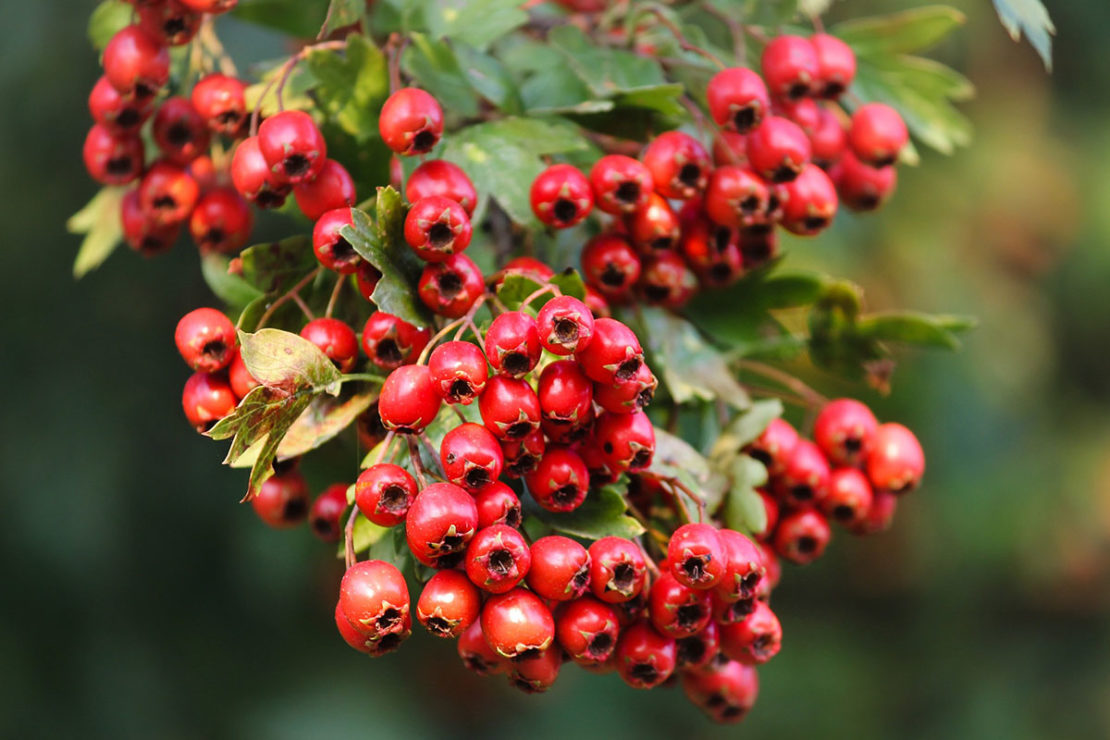
The History, Mythology, and Offerings of Hawthorn
With the arrival of fall, I am excited for the hawthorn trees to begin ripening their fruits to crimson, soon ready for harvesting. Hawthorn (Crataegus spp.) is a member of the Rosaceae family. This botanical family also contains red raspberry (Rubus ideaus) and wild rose (Rosa woodsii), each of which, like hawthorn, protect themselves by the thorns they bear. How fantastic is it that herbs in the rose family are so easy to love, and yet, they know how to protect themselves as well? It would seem they have firm boundaries in place, and therefore, demand respect.
I often find that my clients could use the support of hawthorn in a wellness formula or even as a simple tea or tincture as it offers various actions that lovingly guide us through the modern world. While we may be bombarded with information and opinions, hawthorn stands unmoved, ready to hold us steadfast.
Hawthorn is so intriguing with its storied past and present. With almost 300 hawthorn species, it’s no wonder there are many interesting tidbits passed down over time. While this abundant tree is the subject of various stories, mythology, and interesting facts, hawthorn also provides us with more than just story—it provides us with a range of supportive actions for both the physical and emotional body. The most common of the hawthorn species is Crataegus monogyna, C. oxyacantha, and C. laevigata. All hawthorn species have wellness benefits (de la Forêt, 2017) and herbalists use them in similar ways. In this article, I’ll touch on some of the myths, as well as the benefits hawthorn offers. You’ll also find two easy hawthorn recipes to use throughout the fall season.
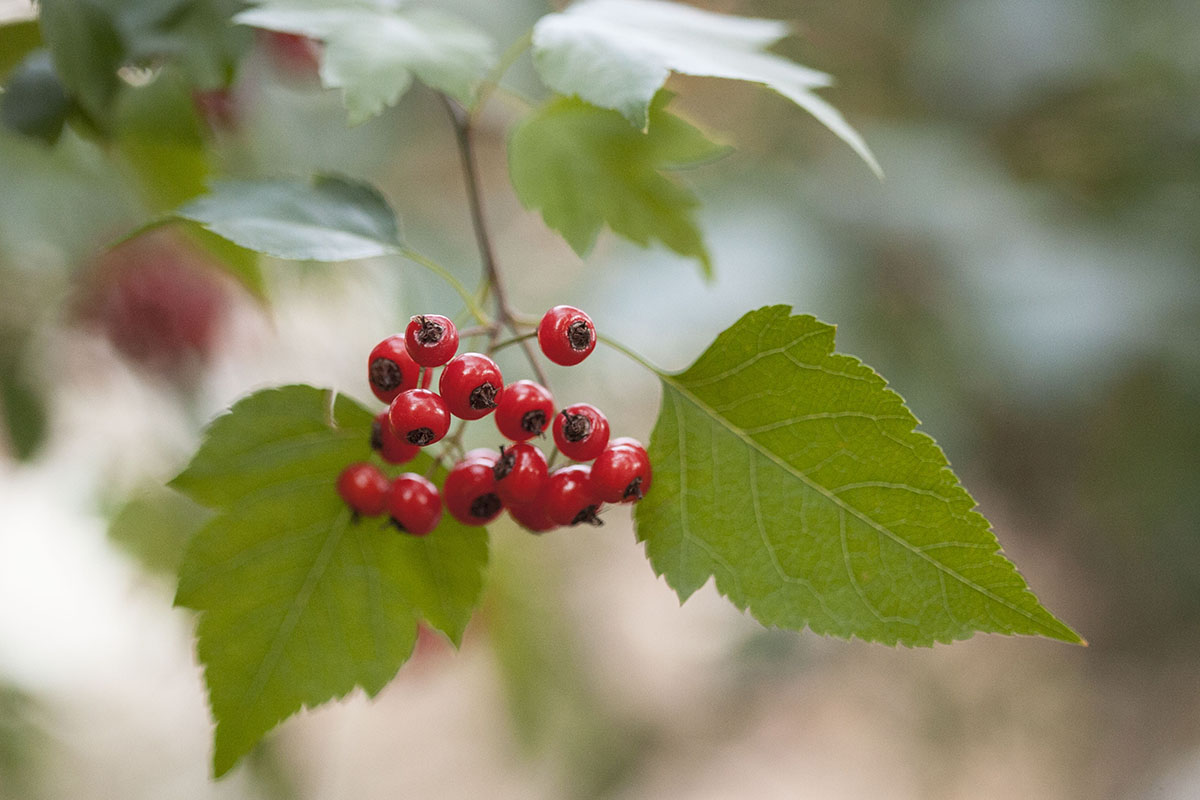
Hawthorn History and Mythology
Hawthorn has many colloquial names such as the May, May thorn, and thorn apple, and it typically produces its white flowers around May 1st. Interestingly enough, Maypoles were said to be made from hawthorn trees (Masé, 2013) which are very fitting as those beautiful flowers pop just in time for May Day and Beltane celebrations.
The folklore behind the cutting of hawthorn is quite interesting. Some say that cutting down hawthorn branches may bring bad luck, especially if one brings the cut branches indoors. Conversely, leaving cut hawthorn branches laying outside was often thought to keep witches from entering the home. However, felled hawthorn branches are believed to have been made into powerful wands and brooms for witches.
Another interesting bit of hawthorn history is that the Mayflower ship was said to be named after the hawthorn tree for the feeling of hope that this blooming tree inspired in England. Hawthorn symbolized not only hope but love, marriage, and intimacy.
Hawthorn can often be found in small groves as well as hedges—where it has been planted to create a physical barrier between homes and properties. This weaving is called a hedgerow and haw, in fact, translates to hedge. You can begin to sense how this tree would have good boundaries.
I remember the first time I knowingly spent time with a hawthorn tree. It was fall, and it was among both linden and rose—a spiritual heart herb garden if ever there was one! I was drawn to the thorns, the lobed leaves, and the darkening fruits. It was then that I was told about the playful myth surrounding hawthorn’s history. It is said that the hawthorn is the guardian of the faery realm. If you take a nap underneath a hawthorn tree, you’ll be escorted off to the world of the Fae. Images of spritely, childlike images, colorful clothing, and lively dance flood my mind. Can this tree connect us to the innermost parts of ourselves—those parts that have not forgotten how to experience joy through the lens of wonder?
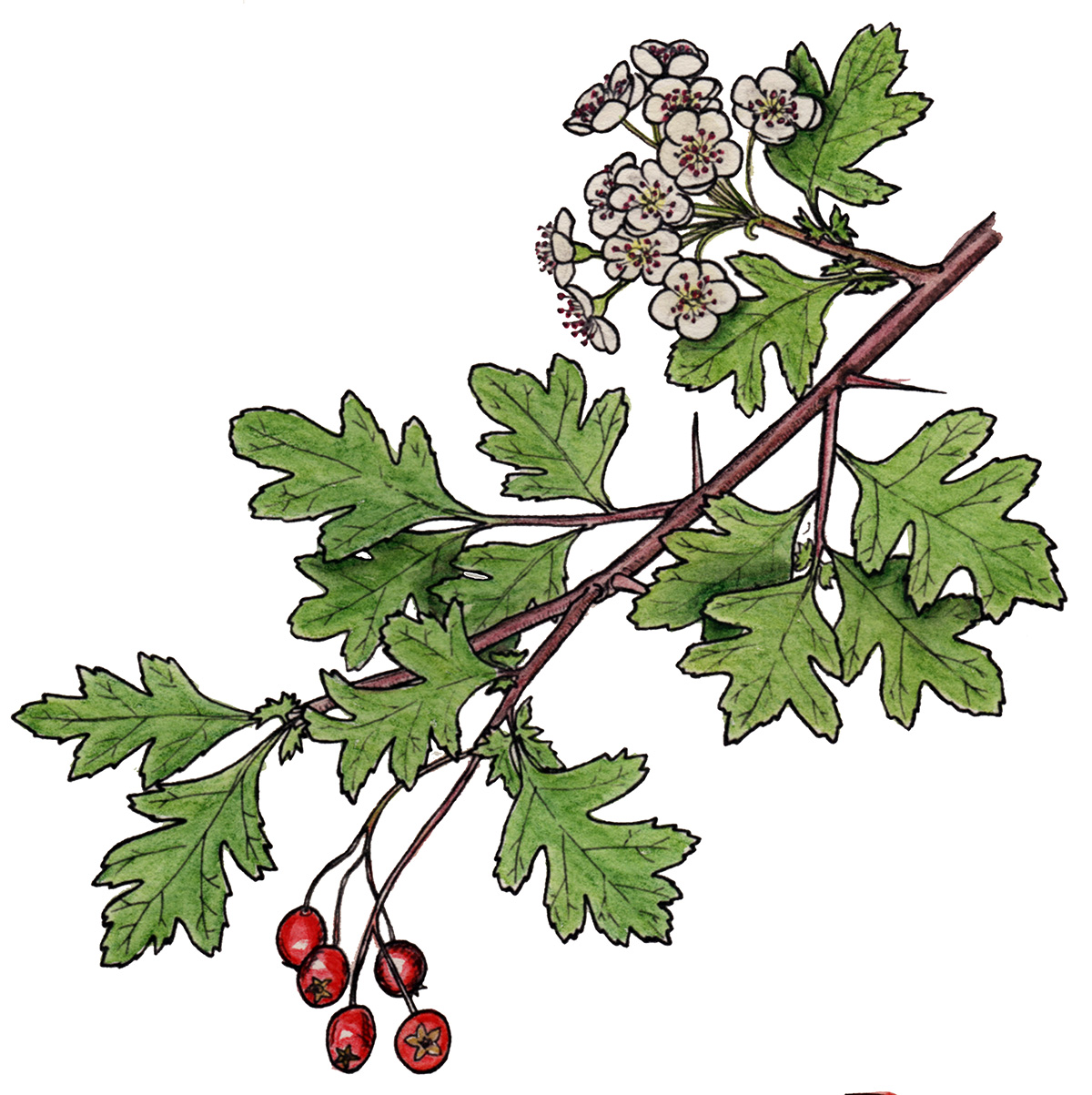
Hawthorn Offerings
The hawthorn tree offers many gifts: leaf, flower, berry, and some herbalists even use the thorn. Hawthorn supports the physical heart by acting as a cardiac tonic (Easley & Horne, 2016), the spiritual heart, and personal boundaries. The berries have a sweet and sour flavor profile while the leaf and flower are more astringent (Tilgner, 2009).
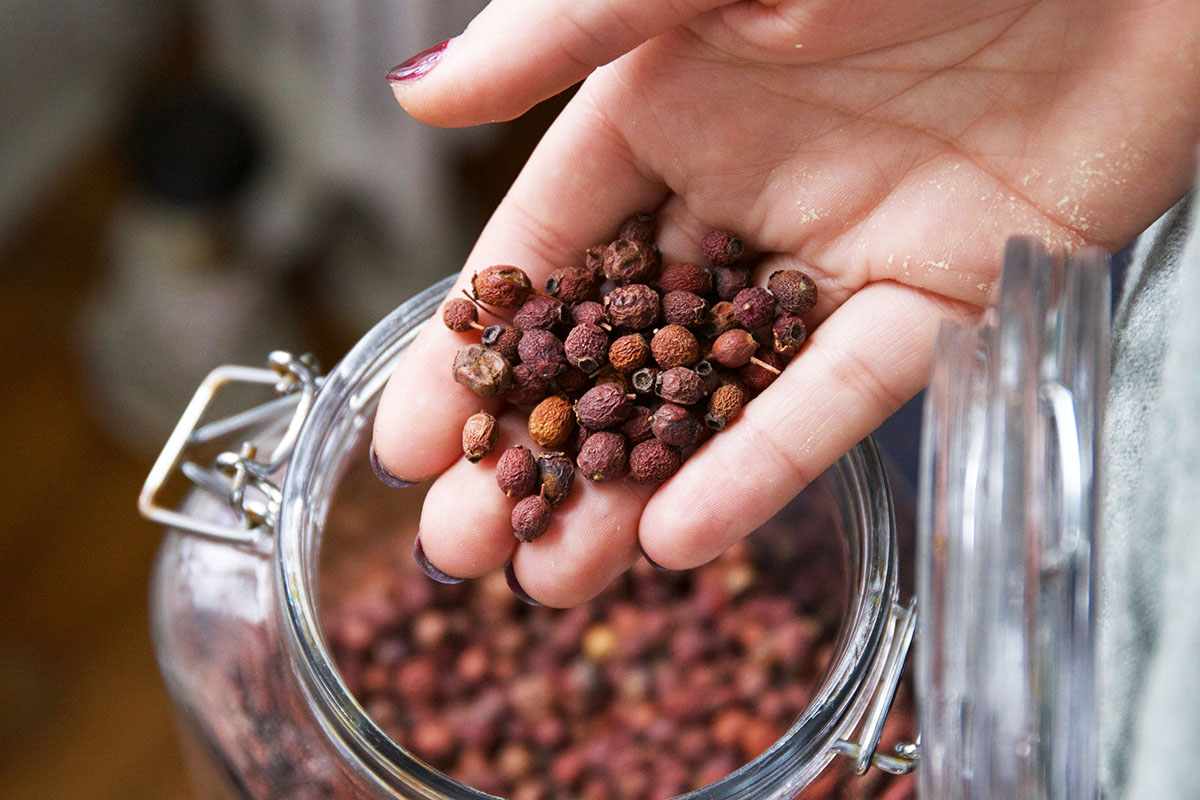
Physical Heart
Chinese, Native Americans, and European peoples have a longstanding relationship with hawthorn as a heart tonic. Its use as a tonic dates back to 1st century Rome, where it was also viewed as a symbol of both love and marriage.
As mentioned above, Hawthorn can provide nourishment to the spiritual heart (emotional body), but it also acts on the physical body as well. The berry is full of vitamin C and flavonoids, thus making a nutrient-rich, antioxidant herbal infusion. Flavonoids can help reduce inflammation and oxidative stress (de la Forêt, 2016), and taken on a regular basis, hawthorn berry is known as a tonic herb for the cardiovascular system (Tilgner, 2009). The leaves and flowers of hawthorn can also provide a calming, nervine quality. Combine all three plant parts—leaf, flower, and berry—and you’ll have a tasty and nourishing tea that is relaxing.
Hawthorn is known as an herb for the physical heart. Hawthorn use can improve the oxygen utilization of the heart as well as improve circulation and energize the cells of the heart (Easley & Horne, 2016). It is known to tonify and strengthen the heart muscle (Easley & Horne, 2016) acting as a cardiovascular trophorestorative (Tilgner, 2009).
With supportive nutrition and exercise, the addition of hawthorn has been used by many herbalists to support the maintenance of healthy blood pressure (Easley & Horne, 2016).
Hawthorn does more than just support the physical heart. Hawthorn berries can be a gentle digestive aid (Easley & Horne, 2016). When taken as a cordial after meals, hawthorn can soothe digestion as well as open the heart.
The energetics of hawthorn are cooling and mixed in moisture depending on the plant part used. (Easley & Horne, 2016). The berries tend to be moistening and have a slightly sweet and sour flavor, and the flowers and leaves tend towards being astringent (Tilgner 2009) which can have an overall drying quality.
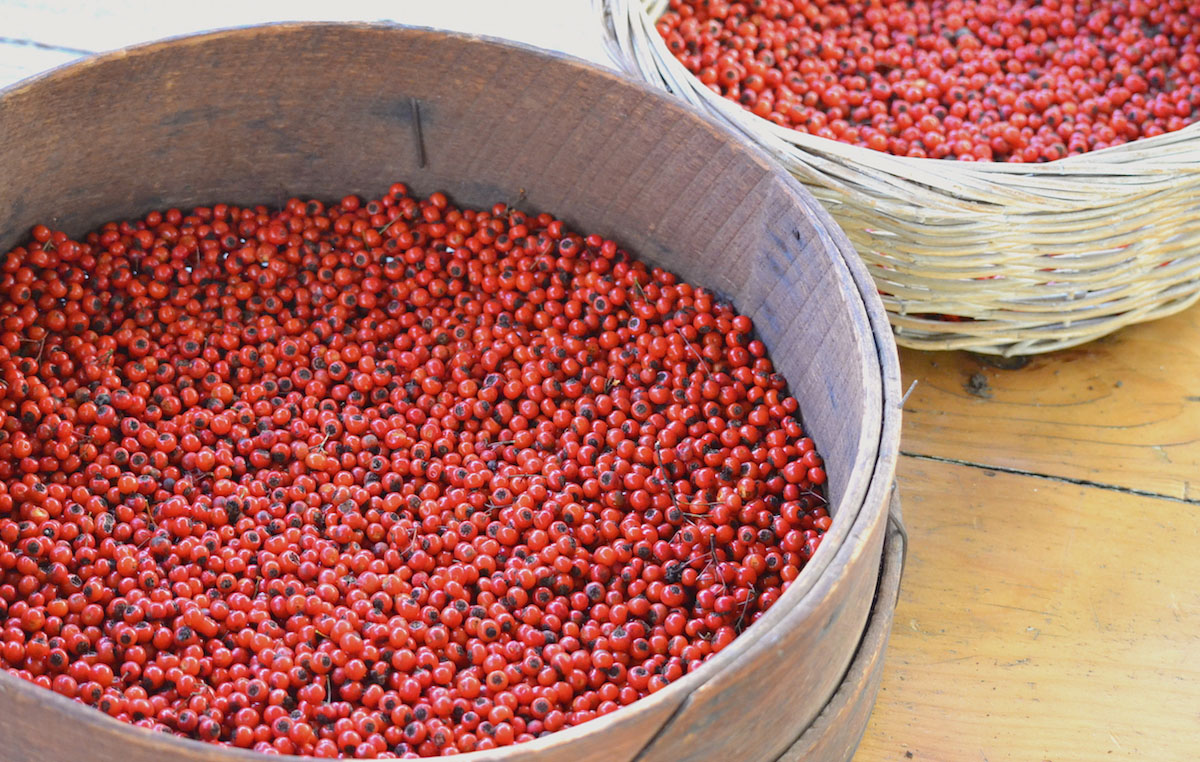
Emotional Heart
Hawthorn is a lovely and generous plant to use in times of tenderness, especially when grief is present. It can soften our hearts as well as promote forgiveness of self and others. When one feels in need of a hug, turn towards hawthorn. I think of hawthorn as being able to help us honor the innate strength and connection to who we truly are at our core. It matches both strength and softness while allowing for the ability to cultivate healthy boundaries as well as gentleness. It also helps support stress with its nervine actions (Easley & Horne, 2016). Moving through grief and a broken heart is edgy and stressful. As a nervine, it can support an overworked nervous system as well as soothe frayed sleep patterns. It’s not uncommon to close ourselves off as we try to protect our soft heart in times of transition and pain. Again, reach for hawthorn when you need that hug or feel alone. Hawthorn has your back and your heart when you need some extra care.
Cautions When Using Hawthorn
There are a couple of cautions when thinking of using hawthorn, especially for those with chronic heart conditions. Folks taking beta-blockers or other cardiac medications should consult an experienced practitioner, such as their primary care physician, before taking hawthorn, and those with congestive heart failure are advised not to take hawthorn (Gardner & McGuffin, 2013).
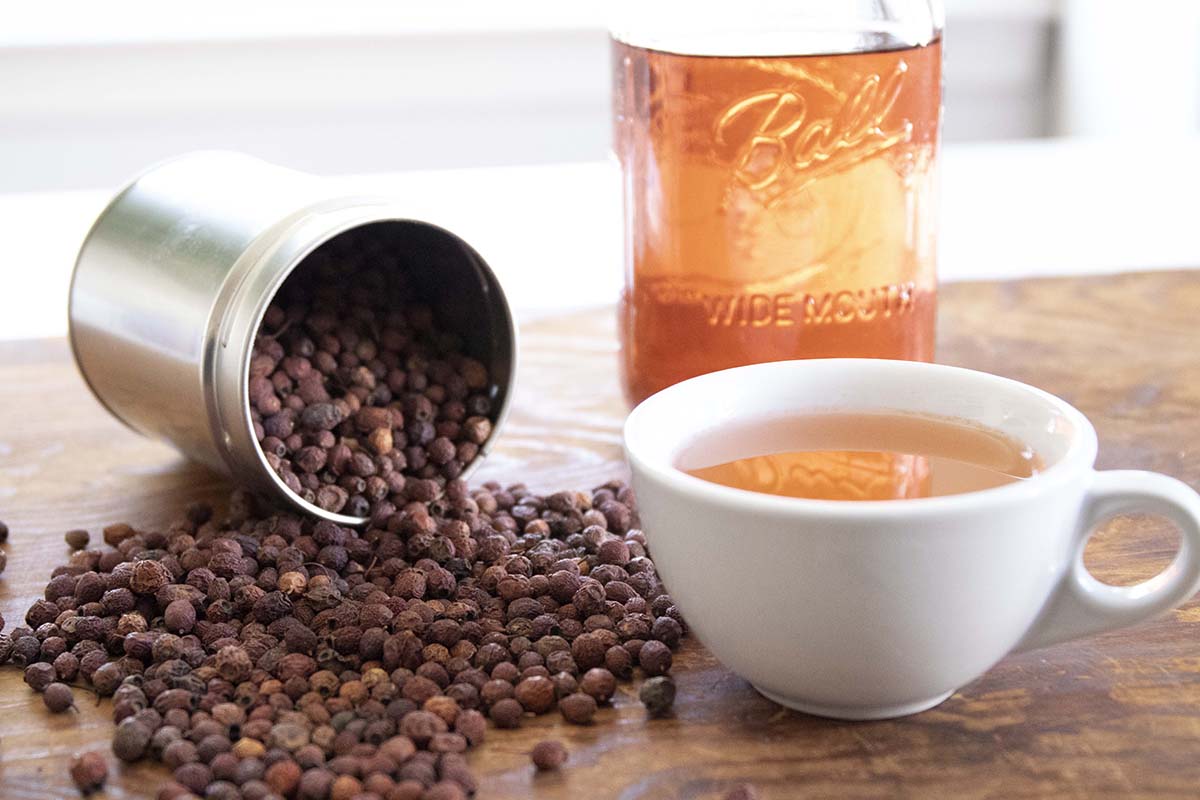
Hawthorn Preparations for Fall
Hawthorn berries are similar to commonly eaten berries you can find in the marketplace and are of a similar safety (Gardner & McGuffin, 2013). Since hawthorn berries are a food, they can be taken in large amounts over time as a tonic (Easley & Horne, 2016). Hawthorn’s berries can be used in various ways, from vinegars, jams, syrups, and other flavonoid-rich recipes to herbal tinctures and teas.
A tincture is also an accessible way to take in hawthorn’s gifts. The berry can be tinctured fresh or dried. When life is busy and tea just seems like too much to add to your day, taking a tincture of hawthorn is yummy and easy. Throw the tincture in your satchel or your pocket and reach for it a few times a day as you feel drawn to it.
As you’ll see below, taking hawthorn as a tea is an easy way to benefit from its actions. Teas can be made from hawthorn’s dried berry, leaf, and flower.
Hawthorn Overnight Infusion
A hawthorn infusion is nutritive and flavonoid-rich. During the fall months, it’s a good idea to load up on nutritional herbs to keep us well as we transition into cooler weather.
1 tbsp of each organic hawthorn (Crataegus spp.) leaf, flower, and berry
1 pint-sized canning jar
Springwater
- Fill a pint jar with hawthorn leaf, flower, and berry mixture.
- Pour just-boiled water over the herb, filling the jar within 1-inch of the top, cap, and let it sit overnight.
- Strain in the morning and enjoy throughout the day at room temperature or warmed up.
Hawthorn Berry Cordial
A delicious after-dinner cordial to ease the stomach, open the heart, and connect with friends and family during the harvest season. Share this tasty beverage with those you love.
(Recipe adapted from Alchemy of Herbs by Rosalee de la Forêt)
1 cup organic dried hawthorn (Crataegus spp.) berries
1 chopped organic McIntosh apple, seeds removed
1 teaspoon fresh organic ginger (Zingiber officinalis) root, minced
3 cardamom (Elettaria cardamomum) pods, crushed
1 teaspoon of organic orange peel (Citrus sinensis)
1/2 cup organic dried rose hips (Rosa canina)
1 organic cinnamon (Cinnamomum spp.) stick
2 tablespoons dried organic hibiscus (Hibiscus sabdariffa) calyces
1/3 cup organic 100% unsweetened blueberry juice
1/2 cup organic honey
2 cups brandy
- Combine all ingredients in a quart-sized canning jar.
- Let ingredients macerate for 4 weeks while shaking the jar daily.
- Strain and compost spent material.
- Enjoy as-is or add 1-2 tablespoons to a glass of fizzy water.
In Closing
Remember hawthorn for its delightful folklore, for its valued boundary and emotional heart care, as well as its support on digestion and the physical heart. I hope that you have a love affair with hawthorn this season and that the ruby red berries hanging from your local hawthorn trees bring you a sense of deep connection and sweetness. Happy autumn, everyone!
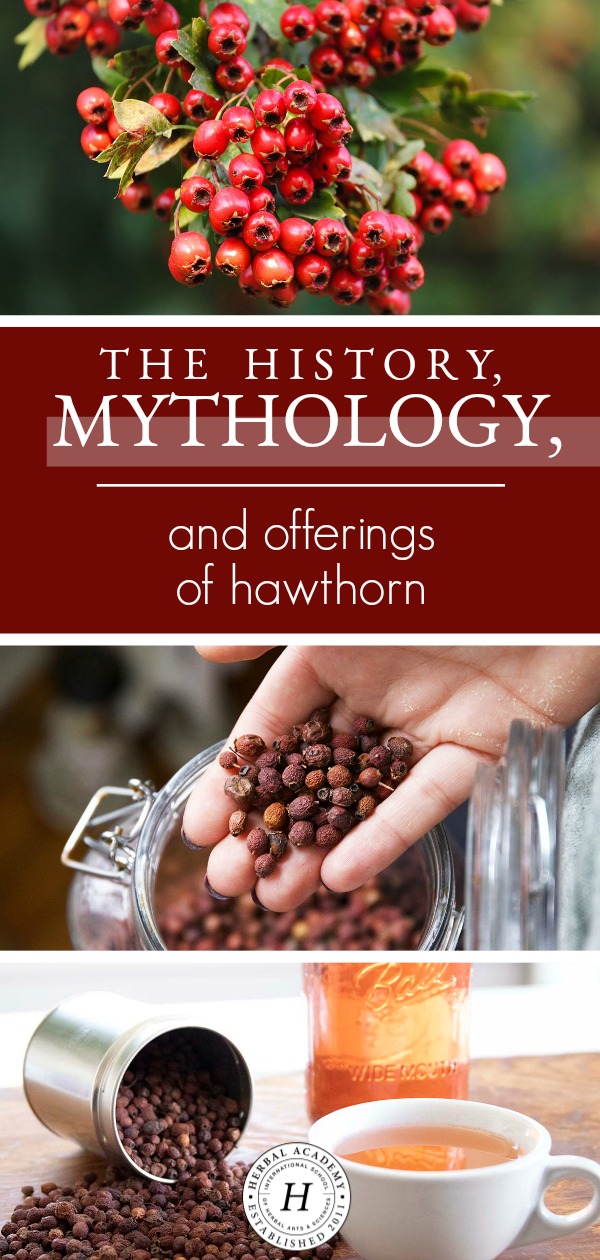
REFERENCES:
de la Forêt, R. (2017). Alchemy of herbs: Transform everyday ingredients into foods and remedies that heal. Carlsbad, CA: Hay House.
Easley, T., & Horne, S. (2016). The modern herbal dispensatory: A medicine-making guide. Berkeley, CA: North Atlantic Books.
Gardner, Z., & McGuffin, M. (2013). American Herbal Products Association’s botanical safety handbook. Boca Raton, FL: CRC Press.
Masé, G. (2013). The wild medicine solution: Healing with aromatic, bitter, and tonic plants. Rochester, VT: Healing Arts Press.
Tilgner, S. (2009). Herbal medicine: From the heart of the earth. Pleasant Hill, OR: Wise Acres LLC.








